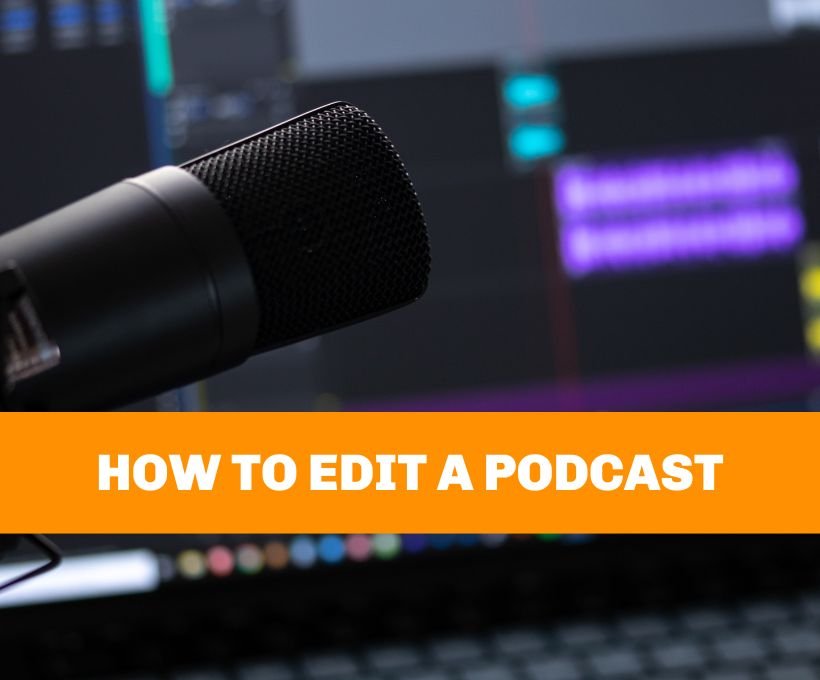

Step into the world of podcast editing with our comprehensive guide. Learn the best podcast editing software, techniques, and tools to make your podcast sound professional.

Hello there, future podcast editor! We’re thrilled to have you here. If you’ve been dreaming about launching your own podcast or improving the quality of your existing one, you’ve landed in the right place. This guide is designed to help you navigate the exciting world of podcast editing, even if you’re just starting out.
You might be wondering, “Why do I need to edit my podcast? Can’t I just record and upload it?” Well, while you technically could, editing is what elevates your podcast from good to great. It’s the polish on the diamond, the icing on the cake. It’s what makes your podcast sound professional, clear, and engaging. It removes awkward silences, background noise, and those pesky “umms” and “ahhs”. In short, editing is a crucial step in creating a podcast that your listeners will love and come back to.
In this comprehensive guide, we’ll start from the very beginning, explaining what podcast editing is and what a podcast editor does. We’ll then dive into the different types of podcast editing software available, and help you choose the one that’s right for you. We’ll cover basic and advanced editing techniques, and even provide a step-by-step tutorial for editing your first podcast. By the end of this guide, you’ll have all the tools and knowledge you need to edit your podcast like a pro. So, are you ready to dive in? Let’s get started!
Before we jump into the how-to’s, it’s important to understand what podcast editing is and why it’s such a crucial part of the podcasting process.
Podcast editing is the process of refining and improving the audio quality of your podcast recordings. It involves removing mistakes, cutting out awkward silences, reducing background noise, and enhancing the overall sound quality. Think of it like editing a first draft of a book or a raw footage of a movie. It’s all about making your podcast the best version it can be.
A podcast editor is like a magician behind the scenes, transforming raw audio into a polished final product. They are responsible for ensuring that the podcast sounds professional and is pleasant to listen to. This involves a variety of tasks, from basic editing like removing long pauses and background noise, to more complex tasks like balancing audio levels between speakers, adding music or sound effects, and even rearranging segments for better flow.
Imagine listening to a podcast where the host’s voice is much louder than the guest’s, or where a loud car horn in the background makes it hard to hear the conversation. Annoying, right? That’s where a podcast editor comes in, smoothing out all those issues to create a seamless listening experience.
In the next section, we’ll start exploring the tools of the trade: podcast editing software. Stay tuned!
Now that you understand the importance of podcast editing and the role of a podcast editor, it’s time to dive into the tools you’ll need to get the job done. The most important of these is podcast editing software.
Podcast editing software, also known as a Digital Audio Workstation (DAW), is a program that allows you to manipulate and refine your audio files. Think of it like a digital studio where you can cut, paste, move, and enhance your audio.
There are many different DAWs available, each with its own set of features, strengths, and weaknesses. Some are free, while others require a subscription or one-time purchase. Some are simple and user-friendly, perfect for beginners, while others offer a plethora of advanced features that can be overwhelming if you’re just starting out.
If you’re a beginner, you’ll want to start with a DAW that’s easy to use but still offers enough features to allow you to produce a high-quality podcast. Here are a few options:
Choosing the right DAW comes down to your specific needs and circumstances. Consider your budget, your technical skills, and the complexity of your podcast. If you’re just starting out and your podcast is fairly simple, a free, user-friendly DAW like Audacity or GarageBand might be perfect. If you’re more experienced or your podcast requires more advanced editing, you might want to invest in a professional-grade DAW like Adobe Audition.
Alright, now that you’ve chosen your DAW, it’s time to dive into some basic podcast editing techniques. These are the bread and butter of podcast editing, the skills you’ll use in every episode you edit.
One of the most common issues in podcast recordings is background noise. This could be anything from a humming air conditioner to a barking dog. Most DAWs have a feature that allows you to reduce or eliminate this noise. In Audacity, for example, you can use the “Noise Reduction” effect to clean up your audio.
Another common issue is inconsistent volume levels. Maybe your voice is much louder than your guest’s, or maybe your intro music is so loud it’s practically blowing out your listeners’ eardrums. You can fix these issues by adjusting the volume levels of different tracks or sections of your podcast. This is often referred to as “normalizing” your audio.
Finally, one of the most basic yet important editing techniques is cutting out unnecessary parts of your podcast. This could be long pauses, mistakes, or off-topic tangents. Cutting these out will make your podcast more concise and engaging.
That’s it for basic editing techniques! In the next section, we’ll cover some more advanced techniques to take your podcast to the next level.
Once you’ve mastered the basics, you can start exploring some more advanced podcast editing techniques. These can help you add a touch of professionalism and creativity to your podcast.
Adding music and sound effects can greatly enhance your podcast. You might want to add intro and outro music, or use sound effects to emphasize certain points or create a certain mood. Most DAWs allow you to import music and sound effect files and add them to your podcast. Just make sure any music or sound effects you use are royalty-free or that you have permission to use them.
There are several techniques you can use to enhance the quality of your voice in your podcast. These include equalization (EQ), which allows you to adjust the balance of different frequencies in your voice, and compression, which helps to maintain a consistent volume level. These techniques can be a bit complex, but there are plenty of tutorials online to help you learn.
If your podcast includes multiple speakers, or if you want to add music or sound effects, you’ll need to learn how to mix multiple tracks. This involves adjusting the volume levels of each track to ensure they blend well together and arranging the tracks in the right order.
Now that we’ve covered the basics and some advanced techniques, let’s put it all together with a step-by-step tutorial for editing your first podcast.
As a beginner, there are a few common mistakes you should be aware of:
Congratulations! You’ve made it to the end of this comprehensive guide to podcast editing for beginners.
We’ve covered a lot of ground, from understanding what podcast editing is and why it’s important, to choosing the right software, mastering basic and advanced editing techniques, and even editing your first podcast.
But remember, like any skill, podcast editing takes practice. Don’t be discouraged if your first few attempts aren’t perfect. Keep practicing, keep learning, and don’t be afraid to experiment with different techniques and tools.
And most importantly, have fun! Podcasting is a creative and rewarding endeavor, and editing is a big part of that. So embrace the process, and before you know it, you’ll be editing your podcast like a pro.
That’s it for now, future podcast editor. We can’t wait to see what you create. Happy editing!